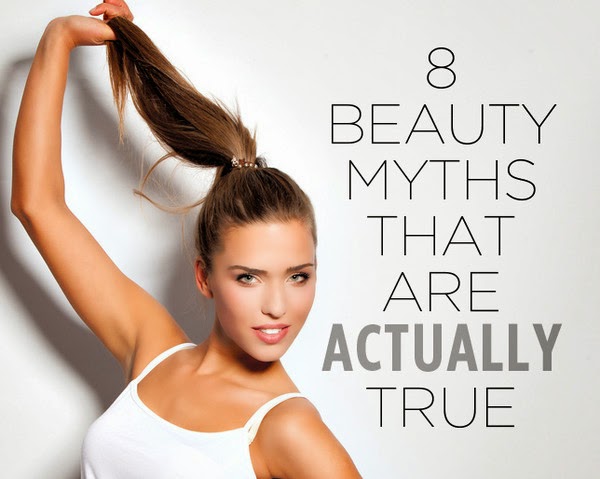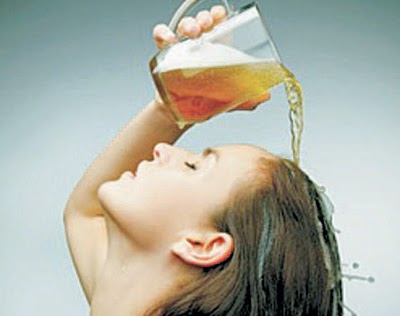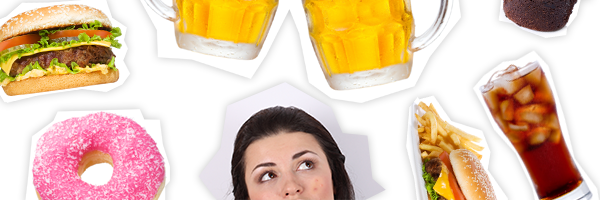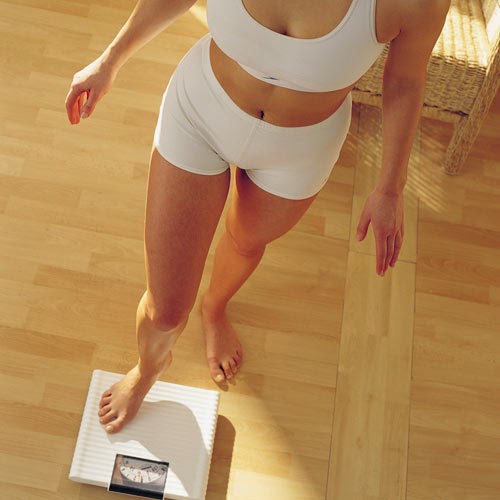1. Wearing your bun or ponytail too tight can lead to hair loss and baldness.
Any hairstyle that causes tension by pulling at the scalp and root can lead to scarring hair loss, which means it’s not going to grow back. Sub out your regular topknot with one of these loose, pretty hairstyles.
 2. Rubbing your eyes causes wrinkles.
2. Rubbing your eyes causes wrinkles. Rubbing your eyes doesn't directly cause wrinkles, but the pulling motion cause the thin, delicate skin around your eyes to wrinkle back and forth, which leads to the appearance of premature aging overtime. You're not going to develop a web of crow's feet from rubbing your eyes once, but don't make a habit of it.
3. A Beer rinse can make hair thicker and stronger.
The barley and hops used to formulate beer are rich in vitamins and proteins that help hair to appear thicker, stronger and shinier, while the alcohol acts as a cleansing agent. While you can't make each individual strand permanently thicker, beer works to swell and widen the hair shaft until your next wash - so as far as "thickening products" go, it's among the best, not to mention the cheapest.
4. Certain foods may cause acne or make it worse.
A diet full of greasy foods and chocolate, long regarded as "acne-causing foods," isn't good for your body, but they aren't to blame for an increase in breakouts. The truth s, there isn't a definitive list of foods proven to cause acne, but because each body reacts differently to components of foods, something you're eating could be to blame for your breakouts. Keep track of your diet, and take note when you eat something that causes pimples or irritation - you might begin to notice a pattern.
 5. The best place of your perfume is in the fridge
5. The best place of your perfume is in the fridgePerfumes can last for years when stored correctly, but the oils and chemicals are fragile and easily compromised bu extreme temperatures, particularly heat. If you live in a hot climate, storing your fragrances in the fridge may be the best way to go. Cool, dark places with regulated temperatures are ideal - nothing kills perfume particles fastest than exposure to direct sunlight.
 6. Lip balms can be addictive
6. Lip balms can be addictiveLip balm addiction isn't a real medical condition (though several Internet forums say otherwise), but it works by making your skin "dependent" on certain ingredients. Ingredients like camphor, menthol and salicylic acid are actually irritating rather than moisturizing, so while they work in conjunction with the rest of the formula to hydrate upon application, they only cause further dryness, leading you to apply more.
 7. You can use hairspray to set your makeup.
7. You can use hairspray to set your makeup.Hairspray can absolutely work to seal makeup and make it last longer, but do you want to use it? The answer is NO. Using hairspray as a sealant is one of the oldest tricks in the book, but we say skip it. Think about how that stuff smells straight out of the can - it's packed with chemicals and other things you just don't want on your face. Perhaps in a pinch it's not the worst idea, but if you find yourself in need of that final setting step, invest in a designated product instead.
 8. Conditioner can also clean your hair.
8. Conditioner can also clean your hair.Conditioner, like shampoo, contains surfactants, the compounds that build up later. The catch is that it doesn't contain nearly as much of them, so the cleaning properties are mild at best. If you have extremely dry or damaged hair, a conditioner washing routine may just be your ticket to softer, healthier strands, but if you have an oily scalp or tend to get greasy despite shampooing everyday, it's probably not for you.
BRITANNIA MEDICAL CENTER - The Enclave
Enclave Complex, Fil-Am Friendship Road, Angeles City.
0925-567-5329 • 0908-865-5662 • 0917-566-1932 • 458-0717
britanniamed@gmail.com || www.britanniamedicalcenter.ph












